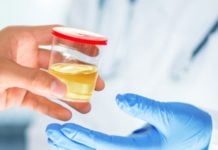Hair loss affects millions worldwide, impacting both physical appearance and psychological well-being. Traditional treatments such as minoxidil, finasteride, and surgical hair transplantation have been the mainstays of management but often yield variable results and address symptoms rather than underlying causes. As science advances in 2025, emerging technologies are transforming hair loss diagnosis and treatment by providing more targeted, effective, and personalized approaches. These innovations encompass regenerative medicine, artificial intelligence (AI)-driven diagnostics, nanotechnology, and advanced pharmaceutical formulations, signaling a new era in hair restoration.
Advanced Diagnostic Technologies: AI and Precision Assessment
One of the key breakthroughs in hair loss management is the integration of AI-powered diagnostic platforms. These systems utilize machine learning algorithms to analyze scalp images and patient data, offering highly accurate assessments of hair density, scalp health, and progression patterns. Technologies like ScalpVision employ label-free segmentation and image translation to overcome data labeling challenges, enabling customized treatment plans based on precise hair loss characterization (MyHair.ai, 2025).
AI-driven diagnostics improve early detection and subtype differentiation of alopecia types, such as androgenetic alopecia, alopecia areata, and scarring alopecia. This precision facilitates timely intervention and monitoring, optimizing treatment outcomes. Complementing diagnostics, robotic assistance devices like MOE-Hair offer gentle, consistent scalp care and can support therapeutic delivery with minimal discomfort (MyHair.ai, 2025).
Regenerative Medicine: Stem Cells, Exosomes, and PRP
Regenerative medicine is at the forefront of hair loss treatment innovation. Stem cell therapy harnesses the ability of hair follicle stem cells and dermal papilla cells to regenerate hair follicles and restore growth. Research has identified critical stem cell populations within hair follicles, and therapies aim to activate or replenish these cells to reverse follicular miniaturization (MyHair.ai, 2025).
Exosome therapy, involving nano-sized vesicles secreted by stem cells, has gained prominence due to its potent growth factors and signaling molecules that promote hair follicle repair and neovascularization without the complexities of whole-cell transplantation. Clinical protocols combining platelet-rich plasma (PRP) with stem cell-derived exosomes have demonstrated synergistic effects, enhancing follicle survival and stimulating robust hair regrowth (Assure Clinic, 2025; MyHair.ai, 2025).
PRP therapy itself continues to evolve, with optimized protocols that increase growth factor concentration and improve injection techniques, offering a minimally invasive, autologous treatment option supporting follicular health and reducing inflammation.
Nanotechnology and Drug Delivery Systems
Nanotechnology is revolutionizing hair loss treatment by improving drug delivery efficacy and targeting. Nanocarriers encapsulate active compounds (e.g., minoxidil, growth factors, or microRNA modulators) and deliver them directly to hair follicle cells, increasing penetration and bioavailability while minimizing systemic absorption and side effects (MyHair.ai, 2025).
3D bioprinting technology is also emerging as an innovative approach to fabricate hair follicle structures for transplantation, providing a scalable, precise method of follicle regeneration in the future. These advancements pave the way for personalized, less invasive treatments with improved safety profiles.
Novel Pharmaceutical Developments: JAK Inhibitors and PP405
Pharmaceutical innovations are addressing specific molecular pathways implicated in hair loss. Janus kinase (JAK) inhibitors, such as baricitinib, have shown remarkable efficacy in treating alopecia areata by suppressing inflammatory signaling that attacks hair follicles. Both oral and topical formulations are under development to optimize efficacy and minimize side effects, offering promising options for autoimmune-related hair loss (Alvi Armani, 2025; Dermatology Times, 2025).
The emerging drug PP405 represents a breakthrough for androgenetic alopecia. This novel topical agent targets mitochondrial metabolism to reactivate dormant stem cells in hair follicles. Early-phase clinical trials demonstrate rapid hair regrowth with a favorable safety profile, heralding a new class of hair restoration medications beyond hormone-based therapies (Alvi Armani, 2025).
Improvement in Hair Transplant Techniques: Robotics and Combined Modalities
Hair transplantation remains a cornerstone for advanced hair loss with the most visible gaps. In 2025, robotic-assisted procedures, exemplified by systems like ARTAS, use AI and precision engineering to harvest and implant follicular units with greater accuracy, reduced follicle damage, and faster recovery (Assure Clinic, 2025).
Refinements in follicular unit extraction (FUE) and direct hair implantation (DHI) techniques are complemented by adjunctive regenerative therapies such as PRP or exosome injections, increasing graft survival and stimulating surrounding native follicles. This integrative approach improves naturalness and density outcomes while minimizing invasiveness and downtime.
Personalized and Holistic Treatment Approaches
Emerging technologies also enable personalized treatment plans that consider individual genetic, hormonal, and lifestyle factors influencing hair loss. AI-driven platforms analyze patient-specific data, including scalp condition, hair loss progression, and treatment response, tailoring combinations of pharmaceuticals, regenerative therapies, and lifestyle interventions for optimal results (MyHair.ai, 2025).
Additionally, incorporating wearable devices and mobile apps for real-time monitoring fosters patient engagement and adherence, offering dynamic treatment adjustments to maximize efficacy.
Challenges and Future Prospects
Despite these exciting advancements, challenges remain. Regulatory approval and long-term safety data for new therapies, particularly stem cell and exosome treatments, are developing areas. The cost and accessibility of advanced diagnostics and regenerative medicines may limit widespread adoption initially.
Future directions include engineered stem cells with enhanced regenerative potential, integration of multi-omics data for precision medicine, and further AI advancements to deliver fully automated diagnostic and treatment platforms. Continued clinical trials and interdisciplinary collaboration will be essential to translate laboratory innovations into routine clinical practice.
Emerging technologies in hair loss diagnosis and treatment are ushering in a revolutionary era of personalized, effective, and minimally invasive solutions. From AI-powered diagnostics and robotic-assisted transplants to regenerative medicine with stem cells and exosomes, the landscape of hair restoration in 2025 is more hopeful than ever. These innovations promise to improve patient outcomes, reduce treatment burden, and ultimately restore confidence and quality of life for those affected by hair loss.
References
- Alvi Armani. (2025). Hair loss treatment for men: Breakthrough options in 2025. Alvi Armani. https://www.alviarmani.com/hair-loss-treatment-for-men-breakthrough-options-in-2025/
- Assure Clinic. (2025). Latest advancement in hair transplant technology 2025. Assure Clinic. https://assureclinic.com/blog/latest-advances-hair-transplant-technology-2025/
- Dermatology Times. (2025). AI-powered insights from 1 million users reveal new trends in hair loss. Dermatology Times. https://www.dermatologytimes.com/view/ai-powered-insights-from-1-million-users-reveal-new-trends-in-hair-loss
- MyHair.ai. (2025). Best new hair growth treatment options in 2025. MyHair.ai. https://www.myhair.ai/blog/new-hair-growth-treatment-2025-options










